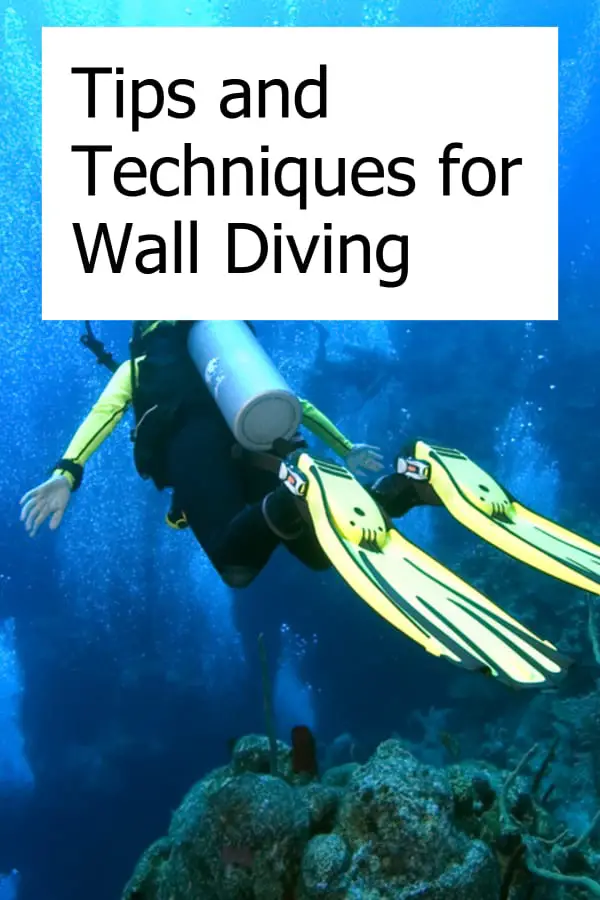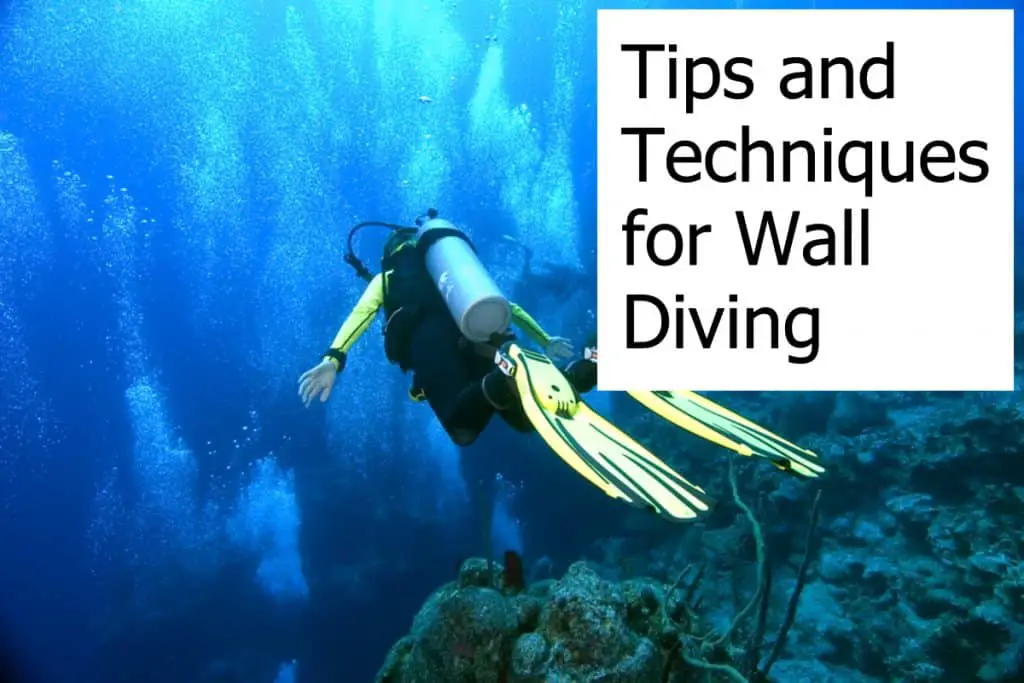Tips and Techniques for Wall Diving
Spectacular shelves of live coral and unique ecosystems are found throughout the world. Wall diving is one of the most enchanting experiences a diver can have. Swimming out past the shelf floor and seeing the great expanse of the ocean is exhilarating.
Many divers will talk about their first wall diving experience for the rest of their lives. There is nothing more mystical than being engulfed by the vast emptiness of the open ocean while being staring at the beautiful coral shelf. Wall diving can take some special skills and practice to become proficient.
What Is Wall Diving?
Wall diving (sometimes called shelf diving), is when a diver descends a vertical wall of coral in the open ocean. Some areas the shelf can start at as little as 3-6 ft. deep. Most wall dives begin at around 40-60 ft. It is the depth of wall diving that makes it a unique challenge.
In addition to the depth that wall dives are performed at, the lack of an ocean floor can be difficult for many new divers to navigate. Many divers use the sea floor as a primary marker for their maximum depth. They can judge their depth based on how close or far they are from the sand.
Unfortunately, those who dive on coral shelves don’t have the luxury of knowing where the ground is. When looking down on a wall dive people are often met with a blue abyss. Sometimes walls are tiered like a terraced garden but this isn’t always a reliable feature of every coral shelf.
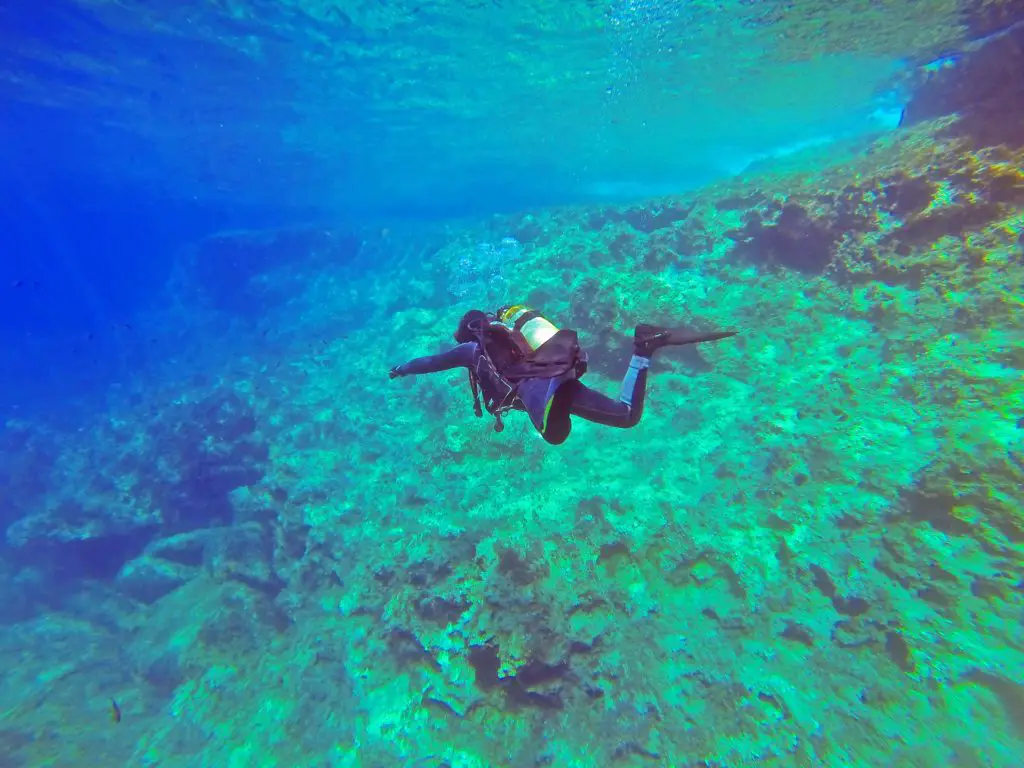
Precautions for Shelf Diving
Watch the Currents
There are extremely strong currents going up and down the shelf wall. Knowing where the currents are is going to help you navigate your wall dive successfully. In addition to knowing where the currents are, you can stay close to the coral wall. Being close to the wall will help decrease the strength of the current.
Buoyancy Control Is Most Important
There is probably no other place where buoyancy control matters like a wall dive. Since many divers use the sea floor as their primary gauge for depth, a wall dive can be an easy place to sink past your maximum depth. Many divers will descend past their planned depth without realizing it.
It is very important to have excellent buoyancy control while diving on a coral shelf because you do not have the floor as a measurement for depth. One trick that many wall divers use is to pick a landmark at your maximum depth and not descend past that point. Using the landmark technique is only effective if you are not drift diving along the wall.
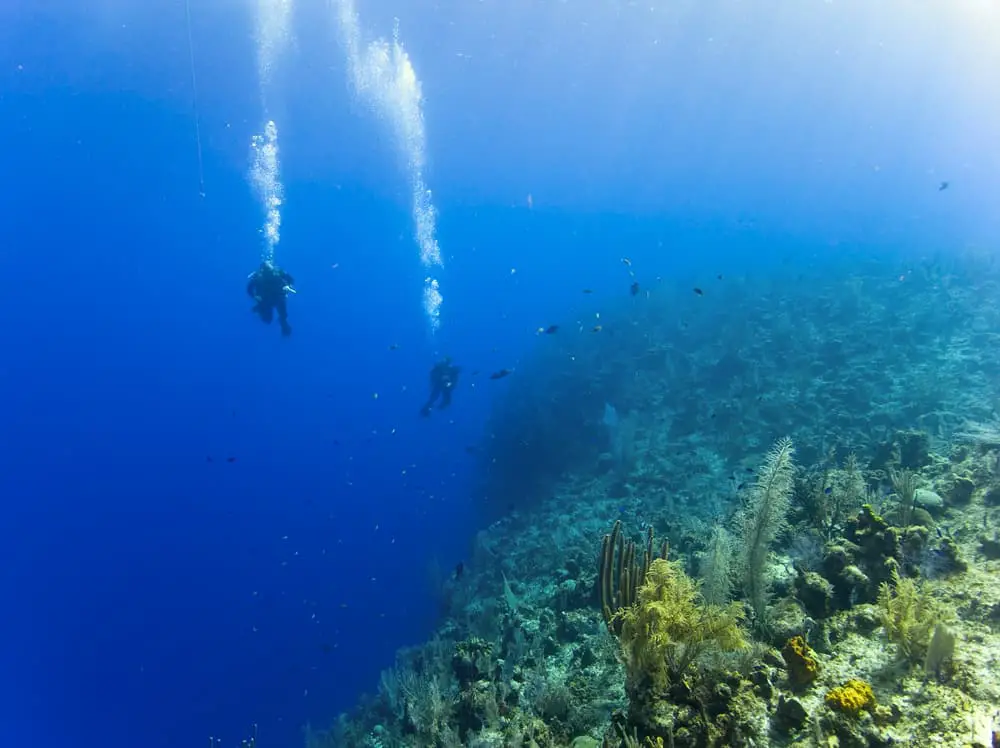
Always Check Your Depth Gauge
While using a landmark to help with measuring the depth is a good technique that divers use, it is not the only thing that should be done. Good wall divers constantly check their depth gauge. Because it is easy to descend past the maximum depth, it is important that shelf dives have a constant check-in of the depth gauge. Dive partners can help keep each other accountable and not to send past the no decompression limit depth on a recreational dive – What is a Deco Dive?
Keep in mind that the deepest part of your dive should always be conducted first. This ensures that you save your air and resources for your ascent. You can use the maximum depth and landmark system to know your maximum depth when leveling off your buoyancy.
Watch Your Air Supply
Since many shelf dives are done at greater depths there is a need for decompression stops. Because of this monitoring the air supply is essential. At greater depths air is consumed at faster speeds. Divers need to be aware of this and check their air consumption.
Using the rule of thirds is a great technique to help make sure that you have plenty of oxygen for your entire dive trip. The rule of thirds incorporates one third of your air on the descent, one third of your air for the ascent, and one third to use as a contingency. Planning for unexpected events with your air supply is essential for wall divers, especially since it is so easy to descend past your maximum depth.
Understand Your Bottom Time
When conducting shelf and wall diving it is important to understand your bottom time. While dive computers do most of the calculations for you, it is vital to keep track of your total bottom time independently of your dive computer. Knowing this information will make sure that you have adequate air supply and limit the possibility of nitrogen narcosis.
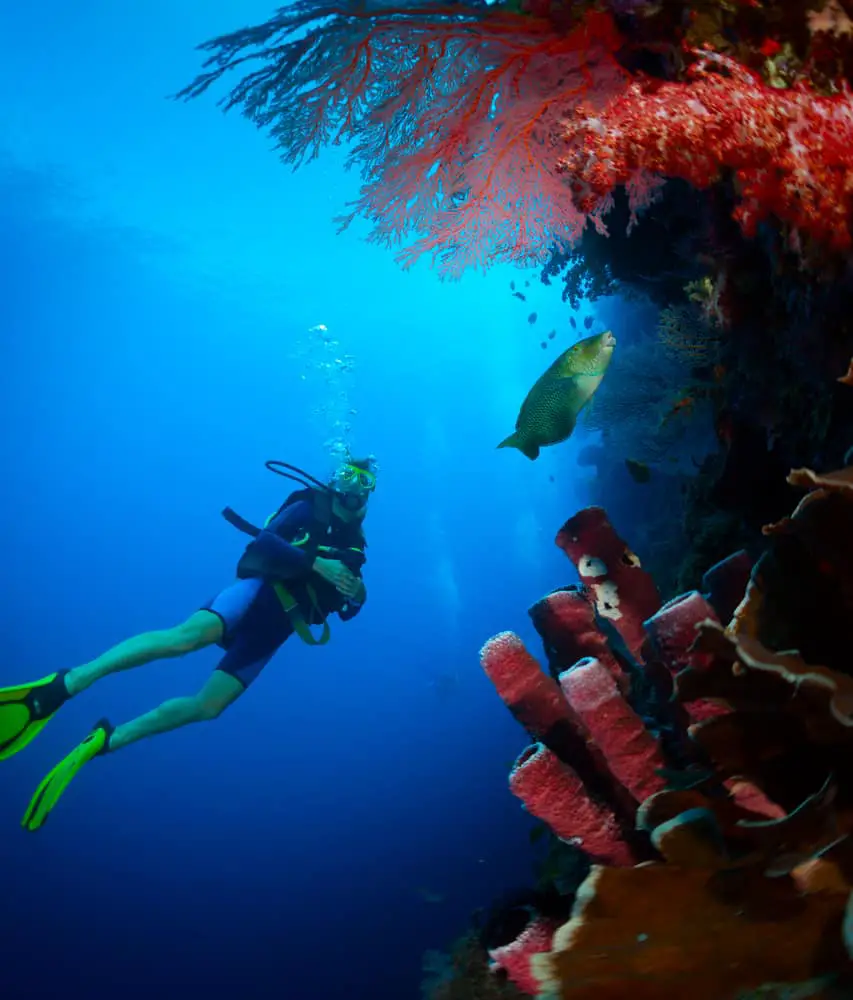
How to Start Wall Diving?
To plan a wall diving experience, the first place to start is with a local dive instructor. A dive instructor will be able to teach divers all the skills necessary to navigate the currents, buoyancy, and other basic skills associated with wall dives. Additionally, dive instructors can help divers achieve their deepwater certification which may be necessary for wall diving in certain parts of the world.
Once a diver has achieved their deepwater certification, they may also want to look into tri-mix or nitrox certifications to help achieve greater dive times (Is it legal to dive without certifications?). These gas mixes help limit nitrogen levels that build up in the bloodstream. They can also increase bottom times and overall dive performance.
Many people get their deepwater certification while on dive vacations. Many dive resorts offer instruction on site. Divers often choose to conduct their first wall dive while getting their certifications. This is a great way to make sure that they get the most out of their vacation dollars as well as their training dollars.
No matter how a diver chooses to start wall diving it is important that they have the necessary skills to dive safely. Always dive with a buddy and remember that the currents on the coral shelf can be very strong. Coral shelves are some of the most amazing places in the world, and every diver should experience them.
